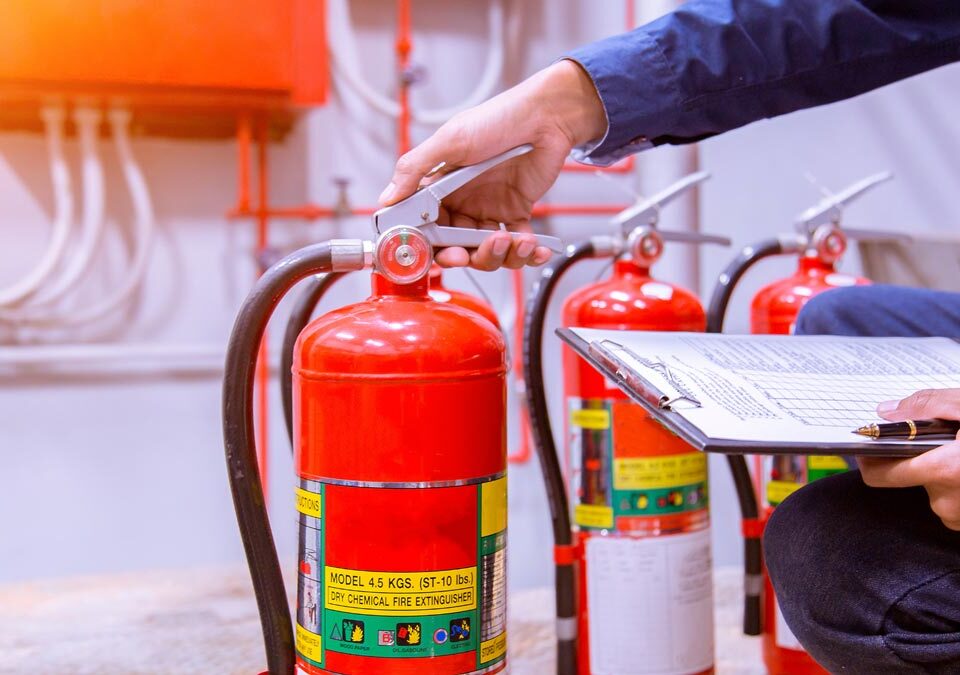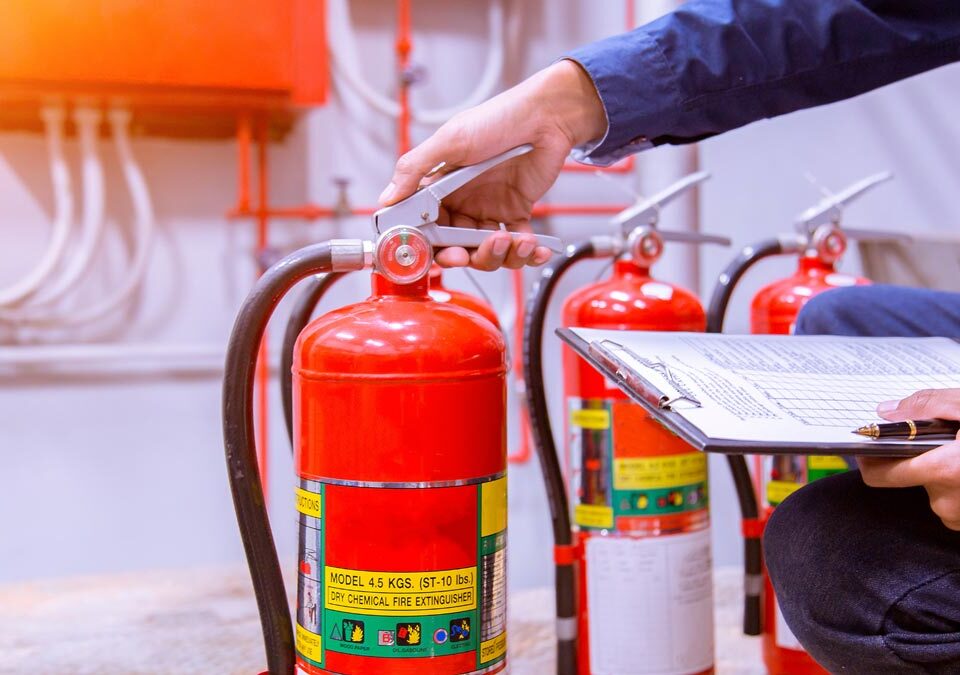Fire Load Calculations and Fire Audit by TheSafetyMaster

Safety Audit as per BIS 14489 by TheSafetyMaster
August 23, 2023
Fire Protection Engineering: Make your Workplace Fire Protection into Your Flexible Design
August 25, 2023Fire is a destructive force that can quickly turn lives and properties to ashes. In order to protect ourselves from this menacing threat, it is crucial to understand the concept of fire load calculations and the importance of fire audits. By delving into these subjects, we equip ourselves with the knowledge necessary to assess risks, implement safety measures, and ultimately safeguard what matters most.
In this enlightening article by TheSafetyMaster, we will explore the intricacies of fire load calculations and fire audits. We will embark on a journey that unravels the science behind measuring potential fire hazards and determining heat release rates. We will also delve into the factors that influence fire load calculations and discover techniques for interpreting their results.
Understanding Fire Load: What It Means for Your Safety
Fire load, an essential concept in fire safety engineering, plays a crucial role in protecting lives and property. By definition, fire load refers to the amount of combustible material within a given space that can potentially fuel a fire. While it may seem like an abstract notion, comprehending fire load is paramount to understanding the risks associated with fires and developing effective preventive measures.
Imagine walking into a room filled with various objects – furniture, fabrics, electronics – all possessing different levels of combustibility. These materials collectively contribute to the overall fire load present in that space. The higher the fire load, the greater the potential for rapid fire development and spreading.
The Importance of Fire Audit: Protecting Lives and Property
Fires pose a significant threat to the safety of individuals and properties alike, making fire audits an essential tool in safeguarding lives and assets. A thorough fire audit not only helps identify potential fire hazards but also enables proactive measures to mitigate risks. By conducting regular audits, businesses and organizations can prioritize fire safety, ensuring the well-being of their staff, customers, and the community.
Fire audits go beyond mere compliance with regulations; they are a proactive approach to prevent catastrophic incidents. Through meticulous assessment of fire load calculations, fuel sources are identified, heat release rates measured, and risk levels evaluated. This comprehensive evaluation allows for targeted control measures to be implemented effectively. By investing in fire audits, we not only protect lives but also create a sense of security within our environments.
Step-by-Step Guide to Conducting Fire Load Calculations
Fire load calculations play a crucial role in assessing the potential fire hazards in a building or facility. By accurately estimating the heat release rate of combustible materials, these calculations provide valuable insights into the fire risk and enable effective fire safety measures to be implemented. To conduct fire load calculations, follow this comprehensive step-by-step guide:
1. Identify Fuel Sources: Begin by identifying all potential fuel sources within the premises. This includes combustible materials such as furniture, textiles, liquids, gases, and electrical appliances. Take into account both visible and hidden sources to ensure a thorough assessment.
2. Gather Data: Collect data on the quantity and properties of each identified fuel source. This may involve reviewing material safety data sheets (MSDS), consulting relevant experts or manufacturers’ specifications, and conducting physical inspections.
3. Classify Fuel Types: Categorize the fuel sources based on their combustion characteristics and heat release rates. Classifications can range from low-risk materials that produce minimal heat when burned to high-risk substances with significant heat generation capacities.
4. Calculate Heat Release Rates (HRR): Utilize appropriate methods for calculating HRR of each classified fuel type. Simple methods like using standard tables or complex techniques such as zone modeling can be employed based on the complexity of your system.
5. Consider Heat Transfer Factors: Account for heat transfer mechanisms like conduction, convection, and radiation between different fuel sources during calculations. These factors influence how fire spreads within a
Assessing Potential Fire Hazards: Identifying Fuel Sources
When it comes to fire safety, a crucial step is to identify the potential fuel sources that could ignite and exacerbate a fire. By understanding the various materials within a given space that possess flammable characteristics, we can effectively mitigate risks and prevent disastrous situations.
During the assessment process, it is essential to take into account both obvious and hidden fuel sources. Common examples of obvious fuel sources include combustible liquids such as gasoline or kerosene, as well as solid materials like wood or paper. However, it is equally important to consider less apparent sources such as electrical equipment, insulation materials, or even stored chemicals. By meticulously examining every nook and cranny of a premises while keeping an open mind, we can uncover potential risks that might have otherwise been overlooked.
Measuring Fire Load: Determining the Heat Release Rate
When it comes to assessing fire hazards, understanding the heat release rate plays a crucial role in determining the potential impact and severity of a fire. The heat release rate refers to the amount of energy that is released per unit of time during combustion. It provides valuable insights into how fast a fire can grow, spread, and engulf a space.
To measure the heat release rate accurately, various techniques are employed. One common method involves conducting small-scale laboratory tests using devices like cone calorimeters or oxygen consumption calorimeters. These tests involve subjecting representative samples of potential fuel sources to controlled conditions and measuring the resulting heat release rates.
Another approach to determine the heat release rate involves using empirical formulas based on specific fuel types. This method accounts for factors such as material composition, density, and combustion efficiency. By inputting relevant data into these formulas, fire safety professionals can estimate the heat release rate without conducting actual experiments.
By accurately measuring and understanding the heat release rate, fire safety professionals can make informed decisions regarding evacuation plans, suppression systems design, and overall risk assessment. Armed with this knowledge, we have the power to design safer buildings and implement effective control measures that significantly reduce the potential damage caused by fires.
Factors Affecting Fire Load Calculations: Considering Heat Transfer
When it comes to fire load calculations, the consideration of heat transfer is paramount. Heat transfer refers to the movement of thermal energy from one object or substance to another through conduction, convection, or radiation. Understanding how heat is transferred within a space is crucial for accurately assessing the potential fire hazard it presents.
Conduction, the transfer of heat through direct contact between materials, plays a significant role in fire load calculations. The conductivity properties of various materials influence their ability to absorb and transmit heat. For instance, metals with high thermal conductivity can quickly transfer heat across surfaces, increasing the fire risk. Conversely, materials with low thermal conductivity may act as insulators and slow down the spread of heat. By considering these properties during fire load calculations, we can identify areas where rapid heat transfer could pose a higher risk and take appropriate preventive measures.
Fire Load Calculation Techniques: Simple and Complex Methods
When it comes to fire load calculations, there are various techniques that can be employed to determine the potential heat release rate of a fire. These techniques can be broadly categorized into two main approaches: simple methods and complex methods. Each method has its own merits and is suited for different scenarios, depending on the level of precision required.
In simple fire load calculation methods, the focus is on estimating the heat release rate based on general assumptions and simplified formulas. These methods are often quick to apply and require minimal data input. They are particularly useful in preliminary assessments or situations where detailed information is lacking. Though they may not provide highly accurate results, their simplicity allows for a quick overview of the fire risk, serving as a useful first step towards mitigation.
Interpreting Fire Load Results: Evaluating Risk Levels
Once the fire load calculations have been meticulously carried out, it is crucial to interpret the obtained results accurately in order to evaluate the risk levels effectively. This step allows us to gain a comprehensive understanding of the potential dangers posed by various fire hazards within a given space.
Interpreting the fire load results involves analyzing the heat release rate and fuel sources identified during the assessment. By assessing these factors, we can determine not only the likelihood of a fire occurring but also its potential intensity and spread. This evaluation enables us to prioritize control measures accordingly and devise robust emergency response plans that safeguard lives and property.
The interpretation process should not be viewed solely as a means to identify risks but as an opportunity for optimism. By gaining insights into potential hazards, individuals and organizations can proactively implement effective preventative measures and reduce the likelihood of fires occurring. By taking proactive steps towards fire safety, we are actively creating a safer environment for all concerned parties.
Strengthening Fire Safety: Implementing Effective Control Measures
In the pursuit of a safer tomorrow, it is imperative to not only understand fire load calculations but also to fortify our fire safety measures. Armed with the knowledge obtained from these calculations and a proactive mindset, we can take decisive action to implement effective control measures that will safeguard lives and property.
One of the key ways to strengthen fire safety is through proper compartmentalization. By dividing larger spaces into smaller areas, fire can be contained within specific zones, reducing its spread and minimizing potential damage. This can be achieved through the installation of fire-resistant walls and doors, ensuring that even in case of a blaze, flames are kept at bay.
Inspiring Stories: Real-Life Examples of Fire Audit Success
Let us delve into the realm of inspiring stories, where fire audits have played instrumental roles in averting potential disasters and safeguarding precious lives and property. These anecdotes not only highlight the importance of fire load calculations but also showcase the power of proactive fire safety measures.
In a bustling metropolitan city, an upscale hotel underwent a comprehensive fire audit that revealed several critical issues. The diligent auditors identified inadequate compartmentalization, outdated sprinkler systems, and faulty electrical wiring as major concerns. Armed with this information, the hotel management swiftly took action to rectify these deficiencies. Within months, the establishment transformed itself into a model of exemplary fire safety. Today, visitors to this hotel can sleep peacefully knowing that their well-being is zealously protected.
Conclusion: Empowering You to Take Action for a Safer Tomorrow
With fire incidents posing a constant threat to lives and property, it is imperative that we equip ourselves with the knowledge and tools necessary to mitigate these risks. By conducting thorough fire load calculations and implementing effective fire audits, we can identify potential hazards, assess risk levels, and develop robust control measures. While the topic of fire safety may seem daunting, it is vital to remember that through our collective efforts in understanding and addressing fire load, we have the power to create safer environments for ourselves and future generations. Let us strive for a world where the flames of ignorance are extinguished by the light of knowledge, ensuring that every space remains unscathed by the ravages of fire.
With Best Wishes
Sanjeev Paruthi
TSM TheSafetyMaster® Private Limited
Unit No 221-451-452, SPL1/J, 2nd & 4th Floor, Sunsquare Plaza Complex, RIICO Chowk, Bhiwadi 301019, Rajasthan, India
Phone: +91 1493 22 0093
Mobile: +91 7665231743/9413882016
Email: info@thesafetymaster.com



